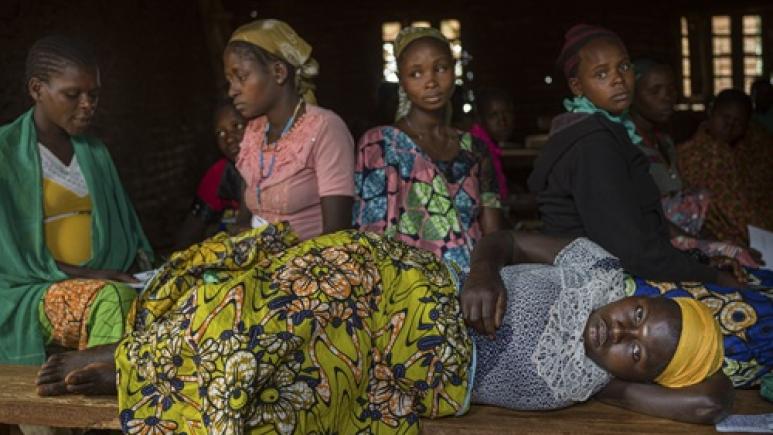Why sex, gender and pregnancy data are essential in times of epidemics?
Why are sex and gender data often overlooked during epidemics?
Emelie Yonally Phillips: During health crises, priority is usually given to rapid interventions to limit the immediate impact. Decision-makers often focus on general data, such as the total number of cases or deaths, without considering disparities linked to sex, gender or pregnant women. This may seem pragmatic in the short term, but it creates significant gaps that can prolong outbreaks, exacerbate existing inequalities and leave us with limited data to base future outbreak response decisions on. Recognizing the distinction between sex and gender, and systematically collecting data and indicators relevant to both, enables a comprehensive analysis of health issues, including how biological differences intersect with social and cultural factors to shape health experiences and outcomes.
Do we already have a large volume of data in this field?
Emelie Yonally Phillips: With colleagues, we carried out a review of the scientific literature covering the period from 2012 to 2022. The aim of this analysis was to identify publications that included data and analysis on sex, gender and/or pregnancy during epidemics in low- and middle-income countries.
Of thousands of peer-reviewed articles, we identified 71 eligible publications on cholera, dengue fever, Ebola, Zika and other epidemics, mainly in America and Africa, with a focus on Zika and Ebola. However, if we expand the scope to include research from high income countries and reports, we find even more evidence for the importance of considering sex and gender components for outbreak prevention and response efforts.
What sex- and gender-related traits stand out?
Emelie Yonally Phillips: The available evidence clearly shows that sex and gender play critical roles in shaping outbreak dynamics across all stages of the outbreak preparedness and response. These factors influence a wide spectrum of issues, including risk levels, vulnerability, access to and use of healthcare, health seeking behaviours, prevention and treatment options, experiences with the health sector, and outcomes and social consequences. While the specific ways in which sex and gender disparities manifest can differ depending on the disease, population, and context, they consistently have a significant impact. This underscores the importance of adopting an intersectional approach when analyzing and addressing outbreak dynamics.
Which communities and individuals face heightened risk and vulnerability to a disease can be influenced by increase biological susceptibilty or differential physiological responses driven by sex or pregnancy related factors or can reflect gender disparities in activities, roles, access to resources and power dynamics. For example, in Zika we saw increased biological risks of contracting the disease via sexual transmission from male to female. This risk was compounded in contexts where gender inequalities left women more vulnerable due to challenges negotiating for condom use and high rates on intimate partner violence. Further, pregnant women faced the greatest risk of most severe outcomes from Zika exposure and some of the hardest hit contexts had unintended pregnancy rates of up to 50%. We have seen other examples of gender disparities in risk and vulnerability in Ebola and Covid-19, where women make up a disproportionate percentage of informal and formal caregivers but have more limited access adequately fitting personal protective equipment (PPE), compared to men in similar roles.
Access to and use of healthcare as well as health seeking behaviours are also impacted by gender. In many settings women are more frequently accessing healthcare services due to sexual and reproductive health (SRH) and more likely to be the recipients of health messaging. Because of this, women may be more likely to have earlier detection or access healthcare services if experiencing symptoms than men. However, women may also face more constraints accessing health facilities linked to costs, childcare responsibilities, insecurity on the road, needing permission, etc. Gender factors such as household decision-making and responsibilities along with health promotion and outreach activities target also play a role in child healthcare. We often see child vaccination messaging being delivered to mothers either in the health centres or door-to-door during the day while the men are at work. In effect, these types of approaches are excluding the decision-makers from the discussion and placing an additional burden on mothers.
Sex and pregnancy also can impact detection and treatment options, with a growing body of evidence that disease symptoms can manifest differently in females versus males due to biological and physiological differences. The case definitions we use are often generalized and don’t capture these differences, which can result in disparities in detection rates between sexes. We also find evidence of sex differences in terms of efficacy and safety of certain vaccines or treatments, although there remain significant gaps in safety and efficacy data disaggregated by sex too.
While most data on gender and sex distinctions observed concern the early phases of the disease, this is not the only phase concerned. The long-term effects of both outbreaks and the response measures put in place can actually increase gender inequities, including increasing the gender education gap. We also find gender differences in long-term health outcomes, mental health impacts, and social consequences.
In summary, gender and sex play a determining role in how diseases are spread, detected, understood and treated, underlining the need to take these dimensions into account in responses to epidemics.
What are the main points you have noted concerning pregnant women during epidemics?
Emelie Yonally Phillips: The physiological changes associated with pregnancy modify susceptibility to disease, making pregnant women particularly vulnerable during epidemics. They are at greater risk of contracting diseases, developing severe forms, suffering complications and, in some cases, dying. Added to this is the increased risk of adverse pregnancy outcomes, such as miscarriage, premature birth or congenital malformations.
Yet, historically, pregnant women have often been excluded from vaccination campaigns for diseases such as Ebola, hepatitis E and yellow fever, due to a lack of data on the safety of vaccines during pregnancy. This exclusion deprives them of essential protective measures.
Pregnancy also influences disease diagnosis. We may find higher rates of case detection of a particular disease in pregnant women as they are often more frequently accessing healthcare services. However, pregnancy symptoms may also mask or alter disease symptoms, making them harder to detect.
During Ebola epidemics, pregnant women were often refused obstetric care until a negative test had been obtained, which increased their risk of serious non-Ebola related complications. Pregnant women also started avoiding healthcare centres for fear of contracting Ebola, which has had long-term impacts on maternal and child health in these areas.
During the 2015 Zika outbreak, we also saw evidence of how response measures can increase vulnerabilities if they don’t take into account gender indicators. In many of the areas that saw the highest rates of Zika infection, contraception availability is limited and socially unacceptable, abortions are illegal, and response messaging rarely included risks of sexual transmission. During this time, data shows sharp increases in clandestine abortions due to fears of congenital malformations such as microcephaly in the infant.
These observations underline the urgent need to better integrate the needs of pregnant women and their partners into prevention, diagnosis and treatment strategies during epidemics.
What are your recommendations?
Emelie Yonally Phillips: This study highlights the significant but variable impact of sex, gender and pregnancy at every stage of epidemics. It also reveals significant gaps in data collection on these aspects as part of health responses.
For an equitable and effective epidemic response, it is imperative to:
- Strengthen the systematic collection of sex-disaggregated data and gender sensitive indicators;
- Integrate intersectional analyses to better understand cumulative vulnerabilities;
- Develop policies and programs that are sensitive to gender dynamics, so as not to reproduce or exacerbate inequalities.
Ignoring these dimensions risks not only limiting the effectiveness of interventions but also exacerbating existing gender inequalities and creating new health problems.








